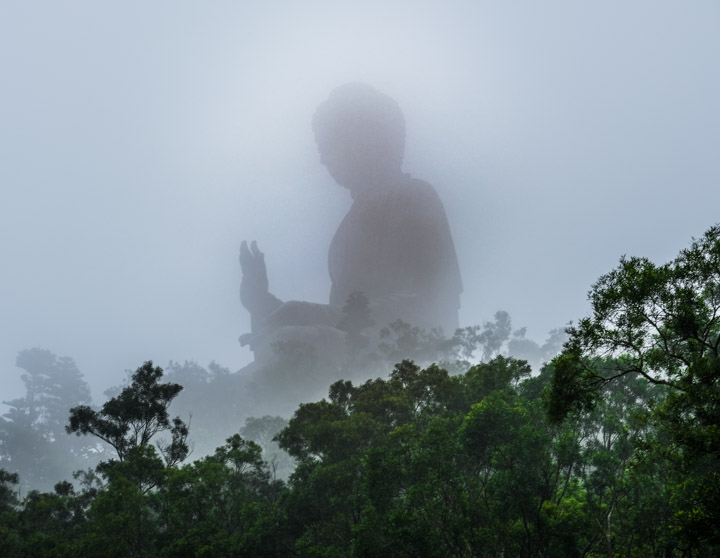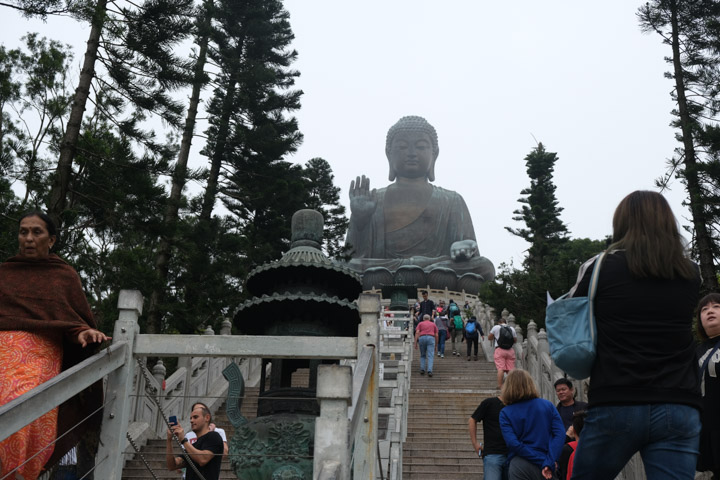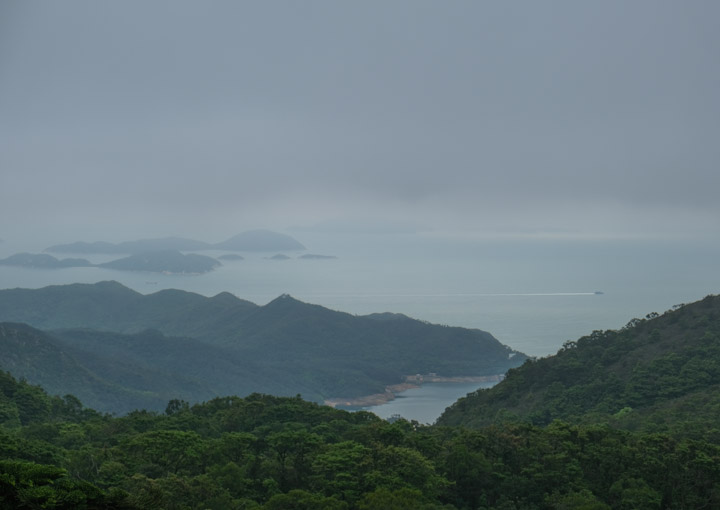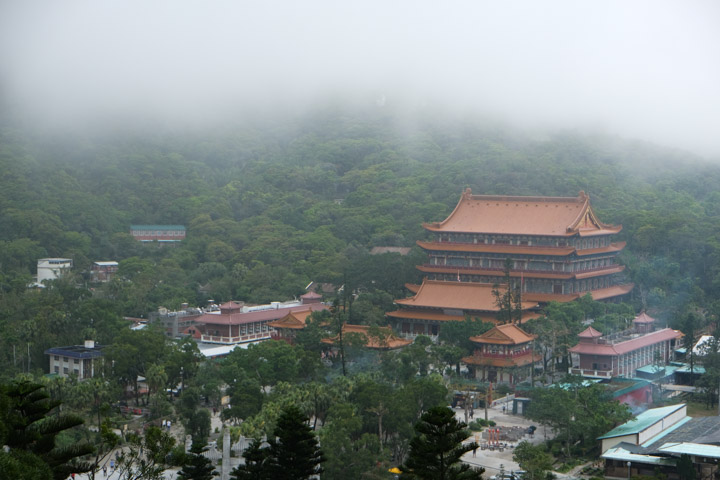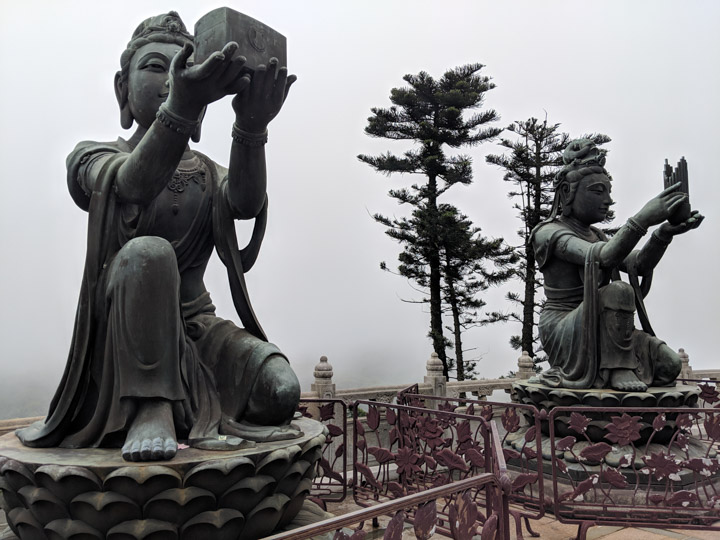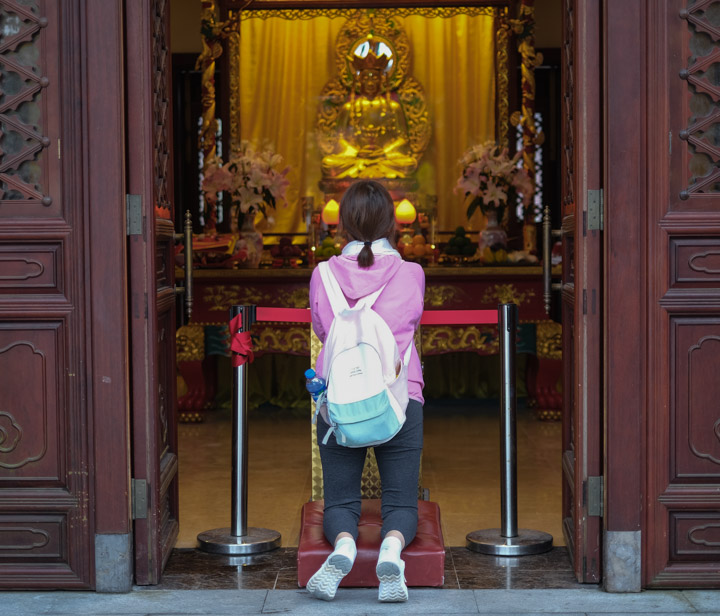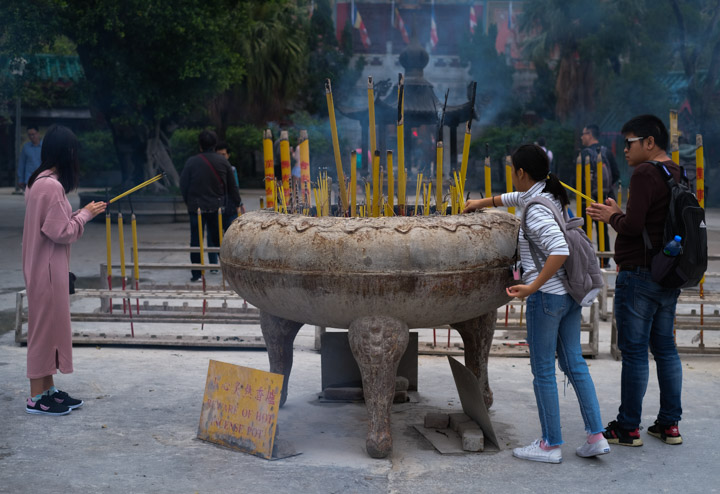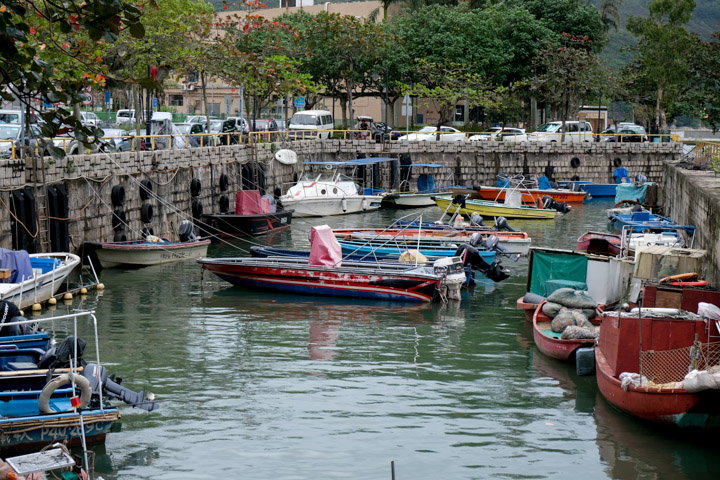
Its official name is Tian Tan Buddha but everyone in Hong Kong just says “Big Buddha” and indeed it’s maybe the biggest tourist attraction. That’s OK, it’s worth visiting and you probably should if you’re there. I offer no insights about Asian religions but some possibly-useful tourist advice and a couple of pictures that make me smile.
[This is part of The Surface of China series.]
You can get a ferry from Pier 6 on Central over to Mui Wo on Lantau Island, where the Buddha is, along with both Buddhist and Christian monasteries, the new airport, Disneyland, and some damn nice hiking trails; I spent a pleasurable few hours on those a couple of decades ago. Anyhow, when we were there in March the marine weather was awful, so no pix from the boat. But Mui Wo is… different. Green, uncrowded (by HK standards) and weirdly full of foreigners. I can see wanting to live here if I were working there.
Then you take a taxi or a bus across the island to Ngong Ping where the Buddha is. If there are three or four of you the cost is probably a wash, but the taxis can be hard to get. It’s a charming ride, a half-hour or so; try to get a window seat on the left. The village isn’t worth your time really, but the religious enclosure, including Buddha and the Po Lin monastery, is. It was a foggy day.
· · ·
There are a lot of steps up to the Buddha;
this was on a weekend day, but out of season.
There’s a nice little art exhibit and gift shop inside the base of the Buddha. It’s not free, but your ticket also counts at the souvenir stands and the monastery’s vegetarian restaurant.
From up on top, the view is nice out to sea and down to the monastery.
· · ·
The Buddha is surrounded by really rather nice statues.
Religion is actively practiced; this one particular shrine received a regular flow of people who knelt and prayed.
The most impressive part of the trip was guarded by “No photography” signs. In a big room up at the back of the temple, a religious service was in progress. The audience was in three groups, each with priests at the front. There was rough but beautiful priest-led crowd-supported chanting, with the sections alternately standing and kneeling. I stood and watched for several minutes and the chanting never stopped.
It bothers me that, while I’ve studied some Buddhist basics, I really haven’t the faintest idea what these people learned as kids from the parents or as young people from the clergy; nor what the ceremony meant; nor what a modern Hong Kong Buddhist is likely to actually believe.
Major incense!
In normal times there’s a cable car that’ll take you straight to Ngong Ping from the big MTR (public transit) station by the airport, but it wasn’t working that day so we hopped a taxi and got into some real adventure because Lantau traffic was light and the driver ninja’d each and every of the many turns on the way to the train, wheels screeching. Halfway, he turned to us, eyes crinkling: “Roller coaster!” he said, beaming.
